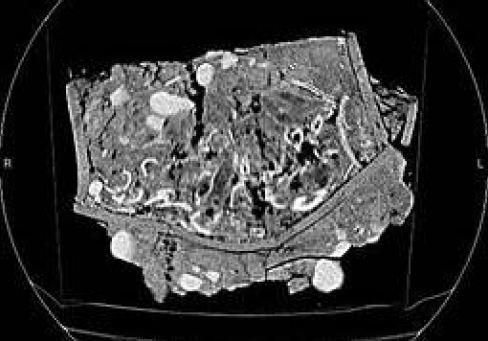Debbie White
Source - http://www.hertsad.co.uk/news/ancient_burial_urns_uncovered_at_st_albans_king_harry_park_site_1_1348102
Two-thousand-year-old human remains, described as being of “national significance,” have been unearthed at a major building site in St Albans.
Archaeologists have found an entrance to the Iron Age tribal capital of Verlamion, precursor to the Roman city of Verulamium, and five urns, several holding cremated remains, dating back 2,000 years.
The ancient items were discovered at former school playing fields on King Harry Lane, currently being transformed into 150 homes.
One of the conditions of approval for the Linden Homes development was that archaeologists could investigate the site before it was built upon.
The urns have been dubbed King Harry one, two, three, four and five in honour of their burial location.
Andy Hood, archaeologist at Foundations Archaeology, Swindon, explained that the urns were found packed in soil and placed vertically at an entrance to Verlamion, which is modern day St Albans.
He said: “They probably date back to the conquest period – the Roman conquest of AD43. I would describe it as of national importance, and a significant find.”
Andy explained that the local inhabitants were at the centre of power when the Romans arrived.
The urns themselves have stayed safe underground for two millennia, despite being buried just 40cm below the surface, where local school children were until recently using the site as playing fields.
Three urns were found in one pit – possibly the remains of a family. A further two were found in two single pits but all five were in close proximity to each other. Remnants of a metal object, possibly a brooch, were also found in one of the urns.
Andy said: “We think there is a Roman burial ground there.”
Investigation of a nearby dyke on the site has unearthed a purse of copper-alloy Roman coins.
They and the urns have been sent to Wiltshire and Swindon History Centre, where months of analysis lie ahead, to determine the age and sex of those cremated.
A key research question is whether they contain the remains of members of the British Catuvellauni tribe or maybe Roman soldiers or dignitaries.
However it is courtesy of high-tech CT scanning that conservators and archaeologists have gleaned so much already about the contents of the vessels.

CT scan image of the contents of one of the five urns, BMI Bath Clinic.
Kelly Abbott, contract conservator at the centre, said it would have been difficult examining the urns without such scanning, as the ceramic exterior was fragmented, held together by soil, as were fragments of bone, like layers of a sandwich.
Some time ago, after Kelly was recovering from back surgery, she was given a CT scan where she joked with a radiographer that it would be great to use such technology to look inside artefacts.
Months later that wish turned into reality when a radiographer at BMI Bath Clinic offered to scan the unearthed urns in her own time.
Kelly said that it was thanks to the radiographer who, using 3D technology and scanning every angle, that the remains were discovered.
She added: “We wouldn’t have been able to investigate them otherwise. Museums don’t get massive amounts of funding, so this was phenomenal. It was because of their kindness we could get those images as it is not something that conservators can normally get hold of.”
Helen Williams, senior conservator, said that an “amazing amount of detail has come from the scan”.
She said that the centre had never received so many urns, which are all different sizes, to “micro-excavate,” or examine on a micro level, at once.
Jeremy Alden, Linden Homes technical director, said: “We have spent a great deal of time liaising with county archaeologists to ensure a robust dig was successfully concluded as part of the redevelopment process at King Harry Park.
“We are delighted that finds of such significance have been uncovered intact and with the help of the Wiltshire Conservation service can be properly interpreted and lead to a greater understanding of local history.”
The Iron Age entrance within the development has been set aside as a grassed area and will not be built upon. The artefacts will, once analysed and preserved, be placed in a museum.